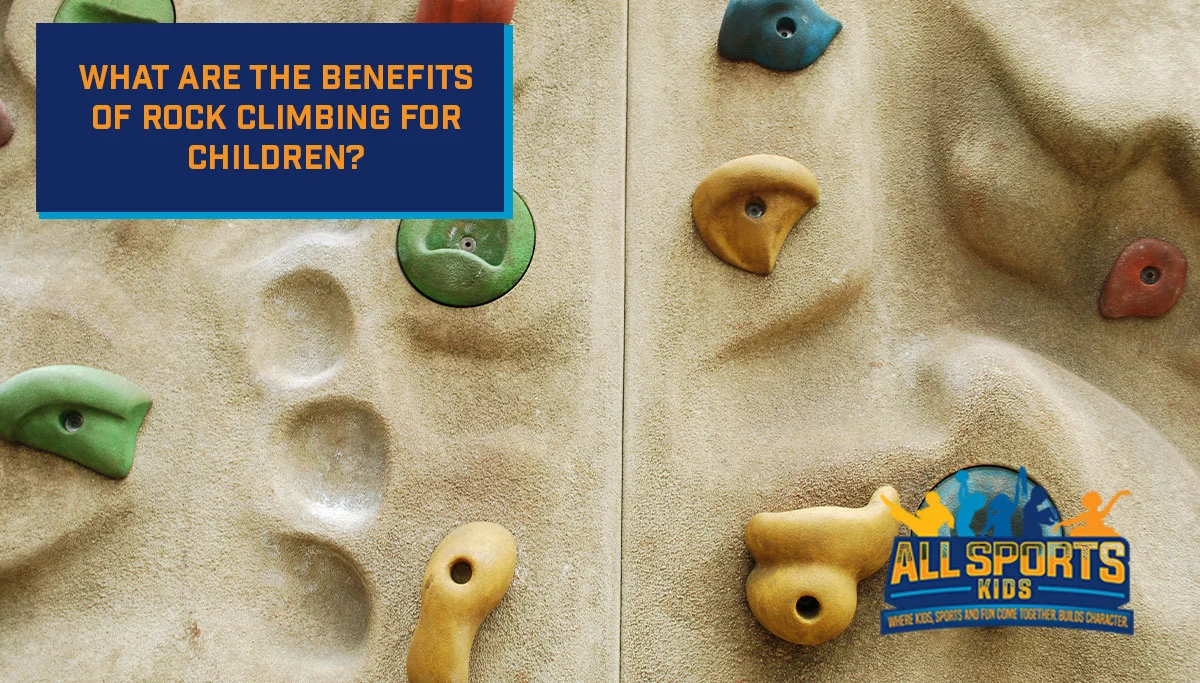What Are The Benefits Of Rock Climbing For Children?

Children have high amounts of energy and the only way to handle it is to burn it off. Parents are always looking for creative new ways to harness that energy, and rock climbing is becoming a popular option. With the development of better safety gear and easier access to safe rock climbing facilities, more and more children are starting to climb. There are tons of benefits to rock climbing for children other than just burning off excess energy.
Full-Body Exercise
Many activities and exercises target one part of the body over another. However, rock climbing is an effective full-body exercise that allows children to develop strength across different areas of their bodies. They do not have to climb particularly high to experience the benefits of this type of exercise.
Problem-Solving Skills Development
Rock climbing requires a lot of problem-solving. Without really thinking about where to put their foot or hand next, rock climbers would simply fall down. Unlike with a ladder or monkey bars, rock climbing walls do not have evenly spaced places to hold or step. Participants learn how to look at and evaluate the rock wall to determine what steps to take next.
In many cases, children of all abilities won’t even realize how they’re working on their problem-solving skills while they’re rock climbing. Rather, they’ll simply be engaged in a fun activity that they love. Working on problem-solving skills is a bonus.
Decision-Making Skills Development
In addition to problem-solving skills, rock climbing forces children to make decisions quickly while thinking long-term. Hand and foot placement decisions make up a big part of why rock climbing is a mental challenge. To progress, your child must be able to analyze the situation and decide where to move next.
They have to make these decisions quickly since they are suspended on the side of a rock wall. However, they have to think about long-term strategy, as well. Rock climbing walls become more difficult the higher you climb. If your child doesn’t plan ahead, they will find themselves in a position that they may struggle to manage.
Decision-making is one of the hardest skills to give kids a chance to practice. Rock climbing reinforces decision-making skills and gives your kid an ongoing way to improve their thinking.
Hand-Eye Coordination

Rock climbing also requires significant hand-eye coordination, as you need to see where the next hold is and be able to grab it. Children who climb on rock walls seamlessly work on their hand-eye coordination, which can help strengthen other activities that require hand-eye coordination, such as writing and using scissors.
Spatial Awareness Development
Rock climbing walls are significantly larger than climbers, which can give kids the opportunity to develop their spatial awareness skills. They will need to understand where they are and how to climb to get to where they want to be. They will practice maneuvering their bodies to be able to climb up the wall.
Balance and Agility Training

It takes a tremendous amount of balance and agility to be a successful rock climber. You need to be able to balance on narrow areas and be agile enough to maneuver to hard-to-reach holds with your hands or feet. Rock climbing can be a really fun way to practice both balance and agility, which can often transfer to better performance in other sports and activities.

One of the coolest benefits of rock climbing is that it’s both a solo and a team sport. It gives participants an opportunity to really spend time in their heads, and work on their own to accomplish great things. However, it can also be a great social activity, where you need to rely on other people to help you with your harnesses and lines.
Self-Confidence
Plainly put, you feel really great about yourself when you accomplish a goal. For most people, being able to rock climb feels like something that’s not attainable. People may think that they’re not in good enough shape or that the wall is too tall. There’s this feeling that overcomes you when you’ve made it to the top of the rock wall (or mountain) that simply can’t be replicated on the ground. Yes, it’s self-confidence, but it’s also the type of confidence that comes from doing something hard and succeeding.
Even though there are many safety features used in rock climbing that will keep them safe, there’s still amazing resilience and self-confidence children feel when they accomplish their rock climbing goals.
Increasing Levels of Challenges
If you go to a rock climbing gym, there are typically levels assigned to each wall. Some walls are beginner-friendly walls that are relatively easy to climb. Then there are more difficult rock climbing walls that require experience and expertise to climb. Children can work their way from the easiest walls to the more difficult ones, moving on to the next one when it seems that they’ve mastered it. This means that there is always a new challenge for kids to work toward and look forward to.
